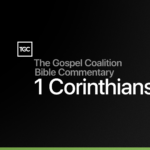One of my most vivid memories growing up in church was the annual summer Sunday our congregation would gather with a local African American church for a joint worship service, followed by a potluck lunch (“dinner on the grounds,” we called it).
We handled it like a home-and-home football series—each church played host in alternating years. The visiting preacher delivered the sermon; the visiting choir handled the music. I certainly remember the incredible food and the robust singing. But what stands out in my mind was the preaching. When the black church’s pastor preached, I would sit with my family on the second row (Baptists typically eschew the front row), mesmerized by his handling of God’s Word and the passionate pathos that was part and parcel of his delivery.
He and our pastor were close friends, and I remember our pastor saying many times, “I’m glad I don’t have to follow my dear brother into the pulpit.” Indeed, there was a unique power in his style. It was clear to me that this church’s pastor knew God, and he knew his people.
Thus it’s with great interest that we should welcome the appearance of a new book, Say It! Celebrating Expository Preaching in the African American Tradition (Moody), a multi-author work edited by Eric C. Redmond, associate professor of Bible at Moody Bible Institute in Chicago. In this interview, we discuss the book as well as the unique style that marks expository preaching in the African American tradition.
Tell us about the new book and what inspired it.
Say It! intends to both explain and also exalt the relationship between the African American preaching tradition and biblical exposition. For some readers, the book’s significance will be that several African American preachers promote exposition as a powerful means of communicating the truth of God’s Word. The work argues for welcoming and embracing exposition as an instrument for strengthening African Americans as they face the challenges of navigating life through the insensitivities and injustices of living in a predominantly white culture than viewing exposition as a synonym for “white preaching.” It also keeps from pitting the preaching tradition against exposition, erroneously forcing preachers to choose one or the other. Those within the tradition can say it to their congregations in the African American vernacular while using the tool of biblical exposition.
Each of the contributors felt such a work was long overdue. Many of us wish such a work existed when we were receiving our training in conservative environments that rarely put forth as examples (of good expository preaching) African Americans within the tradition. We hope it will be a resource that will give expositors of all cultures a deeper appreciation of the Lord’s heralding of his Word through the black church.
Why is biblical exposition so valuable? What can preachers learn from expository preaching in the African American tradition?
We understand exposition to be the explanation of a biblical passage, as a whole and in parts, unified around the author’s central idea. Therefore, if Scripture is God’s voice—the product of God breathing out the text through human instruments, such that it is free from error—when one explains the central idea of the passage, one is explaining God’s voice. Preaching is explaining God’s will in the passage, God’s revelation of himself, and God’s revelation of his works. Exposition allows God’s voice to arise organically from a text, rather than imposing extrinsic meaning on texts. Pastors want those we serve to follow the divine voice and have their lives changed by it. Week after week, exposition allows God’s voice to speak, conforming believers and congregations to the image of God’s Son. Biblical exposition is the real power behind applying the gospel to all areas of life.
In the African American tradition, one communicates a passage’s meaning with highly selective and evocative rhetoric, strategic use of intonation, appropriate use of lament and celebration, and illustrations and stories with which the descendants of colonialism’s injustices would identify. The meaning isn’t be a propositional truth to be acknowledged only intellectually. Preaching within the tradition proclaims the text’s meaning emotively, with sensitivity toward systemic injustice in society and the history of the African American experience to endure and overcome inequity and tragedy.
The proclamation also includes many references to African American family life, mores, literature, and music, so that the whole person and community can place themselves in the experience of moving from replicating evil to imitating the Father. Including the person’s experience—as an emotional, communal, volitional, and intellectual being—is what African American preaching tradition offers to the whole world.
What is the greatest strength of preaching in the African American tradition?
I think proclaiming the historical death and resurrection of Jesus Christ, as the only message of both present and future hope, is the strength of preaching in the African American tradition. Of course, Christ’s death and resurrection as a fact of history is the message of hope, but African Americans proclaim the hope of this good news uniquely—in every sermon and for present realities, not simply in passages that seem to have a large emphasis on hope or future realities.
One can make the case that the role of the African American pulpit—as a faithful steward of the message of Christ—has been key to the survival of African Americans through the 400-year experience of slavery, Reconstruction, Jim Crow, the civil-rights era, and the post-civil-rights era of failed hopes and dreams.
The role of the African American pulpit has been key to the survival of African Americans.
Historically, what made the slave daily return to work for the cruelest of masters was preaching that identified with the slave the one who was “hung high and stretched wide.” What moved the freedman, with no right to vote, to serve his country is that he heard on Sunday that Mary’s baby died—“I said he died . . . he died”—and that he died unjustly. What made a whole city boycott a bus company for months was a word from heaven that told them, “Early, Sunday mornin’, he got up with all power in his hand”—and that power belonged to those whose stature as equal image-of-God-bearers was being challenged at every turn. But their embracing of resurrection hope made them say, “I am somebody!” In every sermon this hope was revisited, restated, reaffirmed, and rhetorically refashioned as the African American preacher proclaimed Christ crucified and raised, doing so with call-and-response celebration and song.
Preaching in the African American tradition is stylistically unique. Talk about this style and how it differs from preaching in majority-white churches.
African American style has its roots in colonial slave culture. The call and response, calls for affirmation of truth, coded words of suspicion toward the majority culture, and toned celebration reflect years of survival skills immersed deeply in the blood of Jesus and his resurrection power.
To this style, the civil-rights era added speaking truth to unjust power structures. Preaching within the majority culture might reflect belief in a culture war against the church. But such a war differs vastly from contexts of disenfranchisement, separate and unequal housing and education, “driving while black,” and a host of other injustices with which the majority of the African American community identifies.
If your only perceived problem is a culture war against Christianity, and you have money and education to ward off or respond to almost every social injustice that could affect your family, your preaching will reflect an absence of a need to discuss social injustices in light of the lordship of Christ and the gospel. However, when you live in the shadow of shackles, whippings, exclusion from education and voting, lynching, redlining, ethnic profiling, race-influenced fear-mongering, and the like, your preaching must reflect at least the answer to the question, “Where is God my deliverer in the midst of this life?” Answering that question over the long course of history brings a style that best moves one from social despair to personal hope—a style that welcomes participation in the message, proclaims Jesus as victor over all, and ends with celebration appropriate for hope in a new world of righteousness, peace, and joy.
If your only perceived problem is a culture war against Christianity, and you have money and education to ward off or respond to almost every social injustice that could affect your family, your preaching will reflect an absence of a need to discuss social injustices in light of the lordship of Christ and the gospel.
How is preaching in the African American tradition similar to other preaching traditions?
The African American tradition values preaching the Scriptures, proclaiming the story of the gospel, and making applications relevant to modern life, all with sensitivity toward its audience. I assume there are other traditions that do the same.
Without question, every tradition is sensitive toward its audience to a great degree—simply by being part of the audience’s nationality, class, ethnicity, political leanings, regional favorites, radius of a membership’s age range and educational achievement, housing and school zones, and entertainment preferences. There is no neutral or sterile preaching that’s not shaped by the dominant culture of the church and the preacher.
I think of men like Charlie Dates (who wrote the foreword) and Robert Smith Jr. as examples of what you are commending. Who are some other men who exemplify the best of the African American preaching tradition—past or present?
This list is so vast! I will mention only a few names beyond Charlie Dates and Robert Smith that should be household to everyone who appreciates expository preaching. The late A. Louis Patterson and E. K. Bailey were giants, and they blazed trails for excellence among preachers of many backgrounds. Ralph D. West and D. Z. Cofield in Houston; Romell Williams in Chicago; George E. Hurtt in Los Angeles; Phillip L. Pointer Sr. and George L. Parks in Little Rock, Arkansas; Derrick Easter in Pine Bluff, Arkansas; Haywood Robinson in Silver Spring, Maryland; Maurice Watson in Largo, Maryland; and Jeffrey A. Johnson in Indianapolis are contemporary senior pastors shepherding their people with powerful, thoughtful, aesthetically pleasing exposition expressed in all of the fullness of the African American tradition.
In addition to those modern stalwarts, there are many expositors serving faithfully in local congregations whose names will not be known to a wider, international audience. African American expositors exist in abundance.
The beauty of the African American church is that it welcomes many forms of preaching into its assemblies. Those who value exposition do not have to find a new home; we simply need to honor the tradition that birthed us.
Try Before You Buy: FREE Sample of TGC’s New Advent Devotional
 Choosing the right Advent daily devotional can be tough when there are so many options. We want to make it easier for you by giving you a FREE sample of TGC’s brand-new Advent devotional today.
Choosing the right Advent daily devotional can be tough when there are so many options. We want to make it easier for you by giving you a FREE sample of TGC’s brand-new Advent devotional today.
Unto Us is designed to help you ponder the many meanings of this season. Written by TGC staff, it offers daily Scripture readings, reflections, and questions to ponder. We’ll send you a free sample of the first five days so you can try it out before purchasing it for yourself or your church.






































